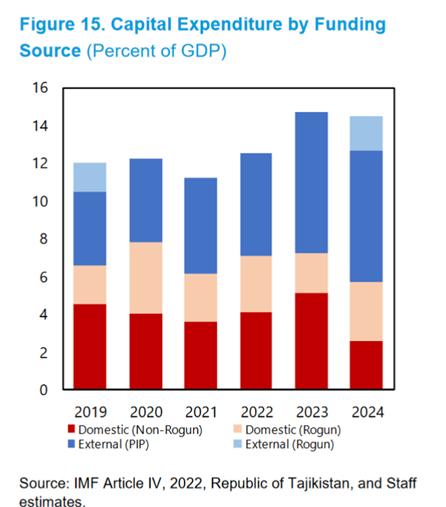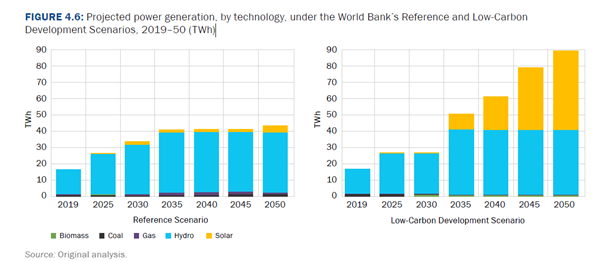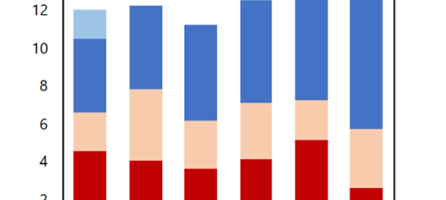As the climate COP is coming, every bureaucratic trickster is seeking to promote its favorite “false solution” for climate adaptation and mitigation. Proponents of the giant Rogun HPP Project in Tajikistan are no exception in this regard.
International Monetary Fund justifying unjustifiable
The IMF released on November 8 a Technical Assistance Report on Tajikistan: “Public Investment Management Assessment with the Climate Module”.
Likely, because the IMF lacks expertise on the subject, the report fails to describe specific mechanisms by which various climate change impacts affect Tajik economy, but still boldly puts forth many recommendations how to solve the problem, which it has not been properly analysed.
For example, the report fails to explain, that since Tajikistan is reliant on hydropower for 93% of its electricity supply, the increasing variation in seasonal water flows in Vakhsh River leads to increasing power shortages during winters. This leads to huge problems in economy and public health.
The most efficient and timely solution for this problem would be diversification of the power system into other renewable energy sources, namely solar power, but that will not happen at any necessary scale due to programmatic choices made by Tajik leadership. The IMF report, actually, clearly illustrates why it is so (also see the World Bank report below).
The IMF points to the fact that when one Rogun Hydropower Project represents such a large share of the budget and the economy, it represents a significant fiscal risk for the whole national economy. The report shows that majority of government budget capital expenses go to Rogun, with little left for any other capital investment needs. While the state budget is spent in such a manner, no diversification of energy system is possible, as no resources are left for alternative infrastructure.

The Figure above taken from the IMF report shows that recently Rogun HPP investments were on the rise and in 2024 spending by the government was equal to at least 3.5% GDP (450 million), while external funding for Rogun added another 1.5-2%. At the same time capital investments by the government in any non-Rogun projects has significantly decreased in 2024. Still that dwindling remainder of “non-Rogun expenses” includes investments in major infrastructure projects associated with Rogun HPP such as Obigarm-Nurobod road or CASA-1000 and several other major transmission lines. In late 2022 the IMF urged Tajikistan that overall Rogun expenditures should not exceed 3% of its GDP. Now it encourages Tajikistan to borrow billions from questionable sources of non-concessional finance (AIIB, EIB, IsDB, etc.) in order to complete the dam.
The IMF further confesses that there is no evidence of active portfolio management, no data on cost and schedule performance, and opportunities to improve delivery across the investment portfolio are likely being missed. “A notable instance highlighting this issue is the Rogun Hydropower project, one of the largest and most critical endeavors in the country, which is experiencing substantial cost increases and implementation delays.”
The IMF calls for detailed climate vulnerability assessment of public infrastructure to climate-related risks. “This analysis could pay careful attention to the vulnerability of the Rogun Hydropower Project, given its national significance and substantial investment requirements. …This would enable targeted interventions for infrastructure resilience, addressing the current gap in quantifying exposure and vulnerability – crucial elements for enhancing preparedness in disaster risk management.”
After all that the IMF still praises Rogun Hydro as the main pillar of the Tajikistan’s development strategy and climate policy…
World Bank Self-Defeating Fantasies
The World Bank also issued a similar «COUNTRY CLIMATE AND DEVELOPMENT REPORT: TAJIKISTAN». It starts with a statement: “The government of Tajikistan has set out a strong agenda to transform the country’s economy through a green transition, with the Rogun hydropower plant at its heart…”.
The crooked logic of the report is to sell Rogun HPP (designed 50 years ago with a completely different purposes) to its bureaucratic audience as the most important climate mitigation and adaptation measure in Tajikistan and Central Asia as a whole. It never discusses whether less destructive, less expensive and faster built alternatives exist at all. It never mentions that, according to the draft ESIA published on the World Bank web-site, the enormous emissions from the new Rogun reservoir (emitting methane), would result in 60% increase of the Tajik electricity sector GHG output and cannot result in any decrease in its carbon intensity.
Being unable to justify the project economically, the World Bank is trying to play a climate card, promising tremendous mitigation benefits to be delivered sometime around 2040 and later, without any mention that more than 6 billion dollars needed to complete this monstrous dam, could be used for faster and more efficient climate measures truly meeting needs of climate emergency.
The World Bank predicts that during the 21 century the snowfall will shift to rainfall, meaning there will be less snow storage and more runoff from rainfall. “The Rogun HPP will therefore seek to offset the loss of snowpack by capturing runoff from rainfall and early snowmelt, supporting clean energy production despite these changes in hydrology. Aligning with regional water-sharing agreements signed by the International Centre for Water Cooperation, the Rogun HPP reservoir is expected to reach a full capacity of 3.78 GW by 2034. With a storage capacity of 13.3 billion cubic meters, the reservoir should boost clean energy exports and provide resilience for agricultural users against drought and climate variability.”
It is alarming, that completion of Rogun HPP filling with water is announced here 5 years before the most optimistic date (2039) written into current project documentation. Nowadays Tajikistan does not have enough remainders of its 9.5 cubic kilometers of annual water quota left for filling this reservoir even by 2039, and 2034 deadline means violation of all water-sharing obligations present today.
According to the World Bank, the water demand for crops is estimated to grow 3–7 percent at the national level under varying climate projections. Supplied graph 3.2. shows that in 5 scenarios out of 6 the agricultural water needs of Tajik agriculture will exceed 9.5 billion cubic kilometres, which it is entitled to withdraw from Amu Darya basin by the ancient transboundary water-sharing agreements signed in the 20th century. However, the World Bank does not discuss the need to renegotiate\improve outdated transboundary water management agreements to avoid tensions and improve efficiency. Although it hints, those will be no longer practical.
The World Bank recognizes that current water sharing relations will be amplified by climate change: “Water security challenges across different basins (water scarcity is particularly acute in Amy-Darya basin and less so in Syr Darya basin) will in turn amplify water management practices, importantly, will affect countries downstream (Uzbekistan, Turkmenistan, and Kazakhstan).”
After all the praise to giant dams, the World Bank soberly mentions in passing, that soon after completion those may be left without water: ”In the long run, planners would also need to consider the possibility of reaching tipping points as, for instance, rising temperatures cause deglaciation and water stored as ice and snow runs out, triggering severe water scarcity.”

Most telling, however, is the World Bank’s presentation of a futuristic “Low-Carbon Development Scenario” (what is really being being supported by the World Bank now is the “Reference Scenario”). In the first 15 years (2019-2034) the Low-Carbon Scenario shows relatively slow growth in electricity generation by 22 TWh, driven by the Rogun HPP construction (NB the project documentation says that reservoir filling will last till at least 2039). That is understandable – all resources of the country are tied to support one single megaproject and no other RE sources are actively developed. Then from 2035 to 2050 there is a skyrocketing growth in RE generation fueled by solar power development increasing generation by 50 TWh. This clearly shows that if solar power installation was pursued from 2019, instead of full completion of the giant Rogun HPP, the same electricity production targets from RE sources would be met at least a decade earlier. And winter shortages of electricity would go away in the first 5 years.
It is really sad to see how major financial institutions are lying to themselves to justify unsustainable politically motivated development decisions made almost 50 years ago, just in order to have an excuse to finance it now.
Review prepared by the Rivers without Boundaries


